The Rules
The rules for canoe polo are set by the International Canoe Federation and can be found here:https://www.canoeicf.com/rules#polo.
Summary of Canoe Polo Key Rules
I will provide a summary of some of the key rules signals and cards used in a canoe polo game below.
The pitch should be 23 x 35 metres (this is often relaxed for lower leagues).
The side lines and goal lines of the pitch are marked by floating ropes, or the sides of the pool in smaller pools.
The pitch is split into several areas - there should be 6 metre markers, 4 metre markers and halfway markers. This results in a pitch like below:
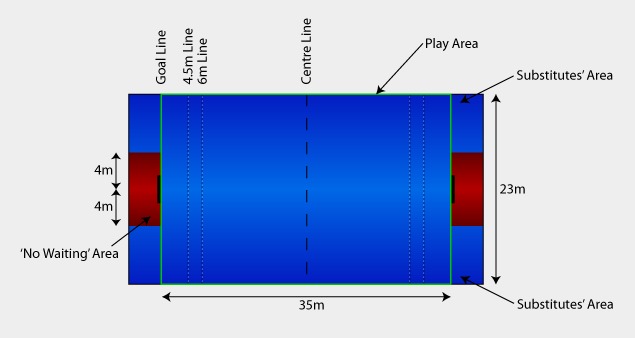
Play can be restarted in a few different ways depending on how the ball went out. With every restart the ball is not in play until it travels 1m horizontally.
Sideline- If the ball crosses the sideline (as the sidelines are rope they can move) then a free throw is given from the spot where the ball went out to the team without possesion. Free throws cannot be scored from directly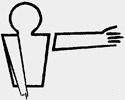
Goalline- If the ball crosses the plane of the defending team's goal and was last touched by the attacking team then a goalline throw will be awarded unless a goal is scored, it rebounds off the goal frame or is saved.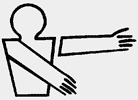
Corner- If the ball crosses the plane of the defending team's goal and was last touched by the defending team then a corner throw will be awarded unless a goal is scored, it rebounds off the goal frame or is saved.
Referees can give several sanctions for illegal play.
Free shot-If play is stopped due to illegal play it will be restarted using a free shot. This is a throw from the point at which the foul was commited. It can be scored from directly.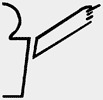
Goal penalty shot- A goal penalty shot will be awarded for a foul inside the 6 metre zone on a player in the act of shooting or in position for a near certain goal. It may also be awarded for a foul on a player outside the 6 metre zone preventing a near certain goal when the goal is not defended. A goal penalty shot is taken with a player taking a sho from the 4 metre line with a goal keeper in posiition. All othe rplayers must stay outside the 6 metre zone until the shot is taken.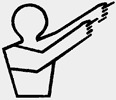
Sanction cards- A referee may award a sanction card for any foul they feel is deliberate or dangerous. A player may recieve a maximum of three sanction cards per game: 1 green (power play), 1 yellow (power play), and 1 red (the player is excluded from the game for the remaining time and cannot be replaced for 2 minutes). A player given their 1st or 2nd sanction card starts a power play. the player who recieved the card cannot be replaced for a maximum of 2 minutes or until the opposition score their next goal (unless it is from a gps given for that foul). If multiple players from the same team are temporarily excluded only the one who recieved their card first may be brought back on if the opposition score. If 3 players are temporarily excluded at the same time then that team will forfeit the game. The referee may move straight to the second or third sanction card if they believe the foul has a major influence on the game. If a goal penalty shot is given a sanction card must also be given.
Ejection red card- A player recieving an ejection red card is excluded for the rest of the game and may not be replaced. They also recieve a 1 game ban and can be refered to their national body for further disciplinary action. An ejection red card is given for a repeated deliberate or dangerous foul that has a major influence on the game or risks injury to another player. An ejection red card must be awarded if a personal attack on a player occurs or if a red card is awarded and disputed. An ejection red is awarded by showing the player a red card as well as a verbal statement of "ejection red".
-
Illegal use of Paddle: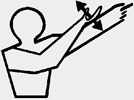
When a player has made a play with their paddle, that is either touching an opponent with their paddle, or having their paddle within arm’s reach of the opponent. (the keeper is exempt from this as long as their paddle isn’t moving towards the player). - This could happen when a player is using their paddle to block an opponent’s shot/pass and their paddle gets too close and goes within arm’s reach.
-
Illegal kayak tackle: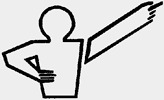
When a player is manoeuvring their kayak against an opponent to gain possession of the ball when: (a) The contact results in significant contact with the opponent. (b) The contact results in significant contact with the opponent's boat at roughly 90 degrees. (c) There is significant or continuous contact with the opponent’s spray deck. (d) The opponent is not within 3 meters of the ball or is not attempting to gain possession. - This could happen trying to get a ball on the other side of an opponent and the player's boat goes up onto their spray deck and the player keeps trying to paddle over the top (continuous).
-
Illegal hand tackle: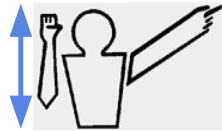
Any hand tackle (push) where the player is not in possession of the ball, the contact is anything other than one open hand to the back, shoulder or side. It is also illegal if the tackle endangers the tackled player or if the player is throwing the ball and the contact is on their arm. - This could be dangerous if the player pulls the opponent or pushes them onto another boat or the side of the pool.
-
Illegal possession:
A player must dispose of the ball within 5 seconds of being in possession of it (i.e. with the ball within arm’s reach) either by passing, shooting, or throwing it one meter horizontally. A player may not paddle with the ball resting on the spray deck of the boat. - This could happen when a player is pushed underwater which could lead to the 5 seconds running out while the player is rolling with the ball.
-
Illegal jostle: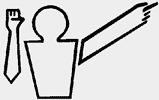
A jostle is when a player is manoeuvring their kayak against a player who is within their own six-meter line. An illegal jostle is when: (a) The opponent’s body is moved by more than 2 meters by sustained contact. (b) The contact would be considered an Illegal Kayak Tackle. - This could happen when an attacker sprints into the 6m and continues driving after contact which ends up with the defender having moved 2 meters.
-
Illegal holding:
A player gaining propulsion or support using an opponent, their equipment or playing are equipment. - This could happen when a player had his paddle on the front of an opponent's boat to slow them down and speed him/herself up.
-
Unsporting behaviour: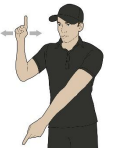
If a referee deems the behaviour of any player unsporting, they may penalise that player with a green card (or worse if sufficiently unsporting or dangerous). Examples of unsporting behaviour are deliberately delaying a play by throwing the ball away, dissent, interfering with the oppositions equipment (by moving it away from them), and many more for you to discover.